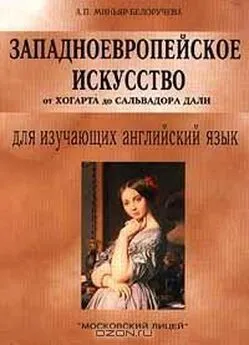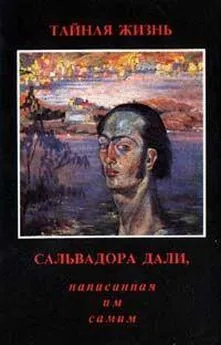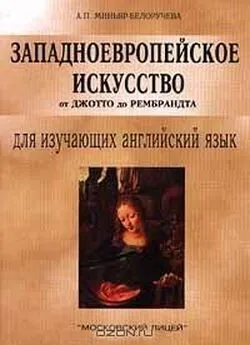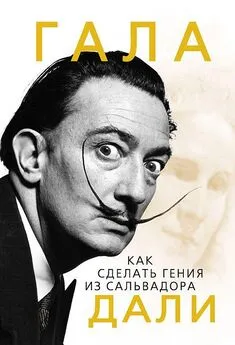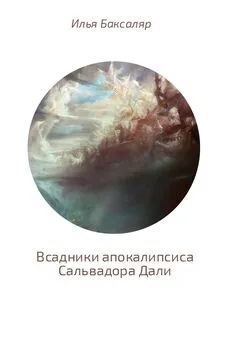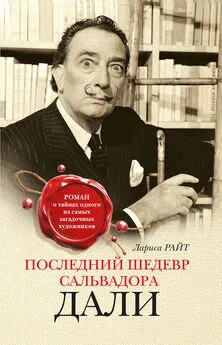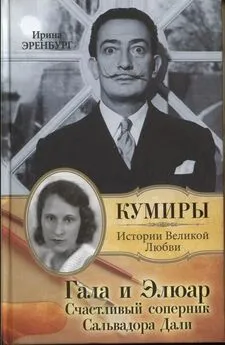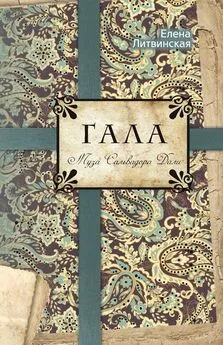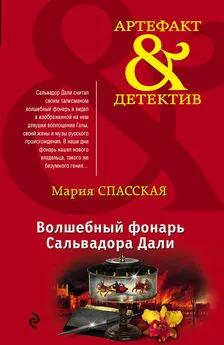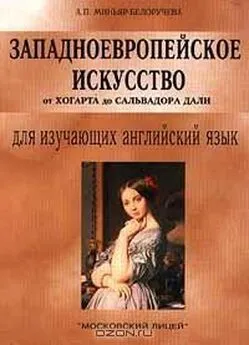Алла Миньяр-Белоручева - Западноевропейское искусство от Хогарта до Сальвадора Дали
- Название:Западноевропейское искусство от Хогарта до Сальвадора Дали
- Автор:
- Жанр:
- Издательство:«Московский Лицей»
- Год:1999
- Город:Москва
- ISBN:5-7611-0182-3
- Рейтинг:
- Избранное:Добавить в избранное
-
Отзывы:
-
Ваша оценка:
Алла Миньяр-Белоручева - Западноевропейское искусство от Хогарта до Сальвадора Дали краткое содержание
Тексты настоящего пособия охватывают почти три века истории западноевропейского искусства от Хогарта до Сальвадора Дали. Это позволяет обучаемым наряду с усвоением обширного лексического материала, приобрести культурологические знания, поскольку тексты содержат информацию о жизни и творчестве крупнейших западно-европейских художников XVIII – XX вв. Система упражнений направлена на усвоение лексического материала и развитие навыков устной речи.
Данная книга является второй частью цикла учебных пособий «Западноевропейское искусство (для изучающих английский язык)». В первую книгу вошли тексты, охватывающие пять веков западноевропейской живописи oт Джотто до Рембрандта. Данное пособие предназначено для студентов-искусствоведов, учащихся классических гимназий, лицеистов и всех изучающих английский язык и интересующихся западноевропейским искусством.
Западноевропейское искусство от Хогарта до Сальвадора Дали - читать онлайн бесплатно полную версию (весь текст целиком)
Интервал:
Закладка:
Курбе принимал активное участие в Парижской Коммуне. Последние годы художник жил в изгнании, в Швейцарии.
VI. Summarize the text.
VII. Topics for discussion.
1. Realism in art.
2. Courbet's mode of life and work.
3. Courbet's revolutionary art.
Unit X Manet (1823 -1883)
Edouard Manet came from a well-to-do Parisian family. The young Manet was trained for a naval career, but then permitted to enter the studio of the conservative painter Thomas Couture, where he received thorough training. Trips to Italy, the Netherlands, Germany and Austria in the 1850s brought him into contact with the work of the Old Masters, through careful coping. He was particularly impressed by the optical art and brilliant brushwork of Velazquez, whose work he saw during a brief visit to Spain in 1865. He also admired Goya and Courbet.
In 1863 Manet exhibited at the Salon des Refuses a canvas entitled Luncheon on the Grass which created an uproar. The grouping of a nude female figure and two fully clothed men in a public park shocked the Parisians as flagrant immorality. In actuality Manet had wittily adapted the composition and the poses from a sixteenth century engraving after a design by Raphael. Manet simply modernised the clothing, surroundings and accessories. Courbet found the painting formless and flat. This flatness was just what Manet was striving for. Illumination seems to come from the direction of the observer, and eliminates mass. By this painting Manet pointed out his belief that the important thing about a picture is not what it represents but how it is painted. The erasure of form allows him to concentrate on the luminosity of the green grass and foliage, the sparkling remains of the picnic, and the glowing flesh of the nude. By posing an insoluble enigma of subject, he has transformed a group of figures into a still life.
Manet soon went even further; in 1867 he painted a subject from contemporary history, the Execution of the Emperor Maximilian of Mexico , which records an event that had deeply shocked the French public and for which Napoleon III and his government, who had installed Maximilian, were blamed. Manet treated the incident in a totally unexpected way, almost as a reaction against such an elaborately staged protest composition as Goya's «Third of May, 1808». Manet made a close study of newspaper accounts and photographs of the execution, and even of portrait photographs of the slain emperor, but instead of arranging the figures for maximum emotional effect he has taken a snapshot of the scene. It is impossible to make out the expressions of the doomed men. Only the officer preparing his rifle for the coup de grace receives special attention. The onlookers peering over the wall are merely curious. The picture consists of coloured uniforms, a briskly painted background, and puffs of smoke. Another traditional subject, this time a tragic one, has been modernised in terms of immediate vision.
In the early 1870s Manet gave up his flat style and adopted the brilliant palette and the broken brushwork of the Impressionists. Some of his later pictures are indistinguishable from theirs. The most memorable of these, A Bar at the Folie-Bergere , painted in 1881-82, only two years before the artist's premature death, is a brilliant restatement of Manet's earlier interest in the human figure.
The entire foreground is constituted by the marble bar, laden with fruit, flowers and bottles of champagne and liqueurs. The nearer edge of the bar is cut off by the frame and we have the illusion that its surface extends into our space and that we as spectators are ordering a drink from the solid barmaid who leans her hands on the inner edge. This illusion is reinforced by the reflection in the mirror, which fills the entire background of the picture. We can make out clearly a back view of the barmaid, in conversation with a top-hatted gentleman. Manet certainly remembered Velazquez's Las Meninas , in whose background mirror appear the king and the queen. Manet's extension of the mirror beyond the frame at the top and sides substitutes for the expected space within the picture the reflected interior of the cabaret, which is behind the spectator and, therefore, outside the picture. This is the most complex image in the history of art. In his early works Manet had modernised the subject. In this picture Manet eliminated the Renaissance pictorial space (a vertical section through the pyramid of sight). Manet's masterpiece is painted with a brushwork that combines memories of Velazquez's virtuosity with the most briliant achievements of the Impressionists. The imposing dignity of the figure and the straight lines of the bar and the crowded balcony make this work his most monumental accomplishment.
Make sure you know how to pronounce the fo ll owing words:
Edouard Manet; Velazquez; Parisian; Austria; Folie-Bergere flagrant; Raphael; erasure; Napoleon; Mexico; Maximilian; luminosity; insoluble
Luncheon on the Grass – «Завтрак на траве»
A Bar at the Folie-Bergere – «Бар «Фоли – Бержер»
Execution of the Emperor Maximilian of Mexico – «Казнь императора Мексики Максимилиана»
Salon des Refuses – «Салон отверженных»
I. Read the text. Make sure you understand it. Mark the following statements true or false.
1. Manet was the founder of Impressionism.
2. Manet admired Giotto, Ingres and Delacroix.
3. In the Luncheon on the Grass Manet was striving to produce three-dimensional forms on a flat surface.
4. Courbet liked the Luncheon on the Grass. 4. Manet never painted subjects from contemporary history. 6. A Bar at the Folie-Bergere is a brilliant restatement of Manet's earlier interest in the human figure.
II. How well have you read? Can you answer the following questions?
1. Where did Manet study painting?
2. What did Manet exhibit in 1863? How was this painting accepted by the public?
3. Why did the Luncheon on the Grass create an uproar? What had Manet wittily adapted in this picture? What did Manet point out by this painting? What did the erasure of form allow Manet to do? What enigma did Manet pose in this work of art?
4. What event does the Execution of the Emperor Maximilian of Mexico record? How did Manet treat the incident? How are the figures arranged?
5. What picture was painted two years before Manet's premature death? What is depicted in the background? What role does the mirror play in this picture? What does this mirror recall?
6. Why is A Bar at the Folie-Bergere considered to be the most complex image in the history of art? What makes this painting the most monumental accomplishment of the Impressionists?
III. i. Give Russian equivalents of the following phrases:
an insoluble enigma; the brilliant brushwork; immediate vision; illumination comes from the direction of the observer; a subject from contemporary history; the broken brushwork; to record an event; to make a close study of; to take a snapshot of the scene; a tragic subject; to give up the Hat style; to adopt the brilliant palette; an elaborately staged protest composition; the reflection in the mirror.
ii. Give English equivalents of the following phrases:
неразрешимая загадка; сосредоточиться на свете; великолепный мазок; отказаться от плоского стиля; запечатлеть событие; богатая цветовая гамма; разорванный мазок; подражать композиции и позам гравюр XVI в.; отражение в зеркале; свет исходит со стороны зрителя; тщательно изучить; трагическая тема.
iii. Make up questions of your own with the given phrases.
iv. Arrange the following in the pairs of synonyms:
a) brilliant; to eliminate; broken; tragic; subject; to give up;
b) disastrous; to refuse; theme; to exclude; split; dazzling.
IV. Here are descriptions of some of Manet's works of art. Match them up to the titles given below.
1. The picture consists of coloured uniforms, a briskly painted background, and puffs of smoke.
2. The grouping of a nude female figure and two fully clothed men in a public park created an uproar.
3. The entire background is constituted by the marble bar, laden with fruit, flowers and bottles of champagne and liqueurs.
a. A Bar at the Folie-Bergure
b. Execution of the Emperor Maximilian of Mexico
c. Luncheon on the Grass
V. Translate the text into English.
Формирование импрессионистов началось вокруг Эдуарда Мане, который получил образование в мастерской Кутюра, одного из столпов академического искусства. Однако подлинными учителями Мане явились Тициан, Веласкес, Гойя, Хале, Рубенс. Старые мастера, прежде всего, были для него предметом восхищения. Мане отличало от импрессионистов то, что он не отказался от широкого мазка, от обобщенной реалистической характеристики и сохранил синтетичность формы и цельность передаваемых характеров. Однако многое связывает Мане с импрессинизмом. Наиболее «импрессионистическое» произведение Мане – «Бар «Фоли-Бержер». В творчестве Эдуарда Мане, с одной стороны, нашли завершение классические реалистические традиции французского искусства XIX в., с другой – сделаны первые шаги в решении проблем, которые станут основными в развитии западноевропейского реализма XX в.
VI. Summarize the text.
VII. Topics for discussion.
1. Manet's early works of art.
2. Manet's Impressionist paintings.
3. Manet's artistic heritage.
Unit XI Monet (1840-1926)
The use of the name Impressionism to characterise the new style came from the first exhibition of members of the group at the recently vacated former studio of photographer Nadar in 1874, where they had often encountered the leaders of Parisian intellectual and cultural life. Claude Monet exhibited among others an extraordinary painting entitled Impression – Sunrise , Le Havre, painted two years earlier, described by Monet himself as «sun in the mist and few masts of boats sticking up in the foreground.» The title gave rise to the name applied to the entire movement. The exhibition was greeted with public derision, the like of which had never been experienced in Paris. Every tradition of European painting seemed to have been thrown aside. Not only form but substance itself has vanished. The picture was a mere collection of coloured streaks and blobs on a light blue ground. Today observers have no difficulty recognising a sailboat and a rowboat in the foreground, masts and equipment, haze, and smoke, all reflected in the rippled surface of the water. This revolutionary painting intended to correspond to the image the eye sees in an instantaneous glimpse of the port of Le Havre at sunrise, summed up the beliefs of the school. In retrospect, the name Impressionism seems one of the few appropriate names in the history of art.
Читать дальшеИнтервал:
Закладка:
